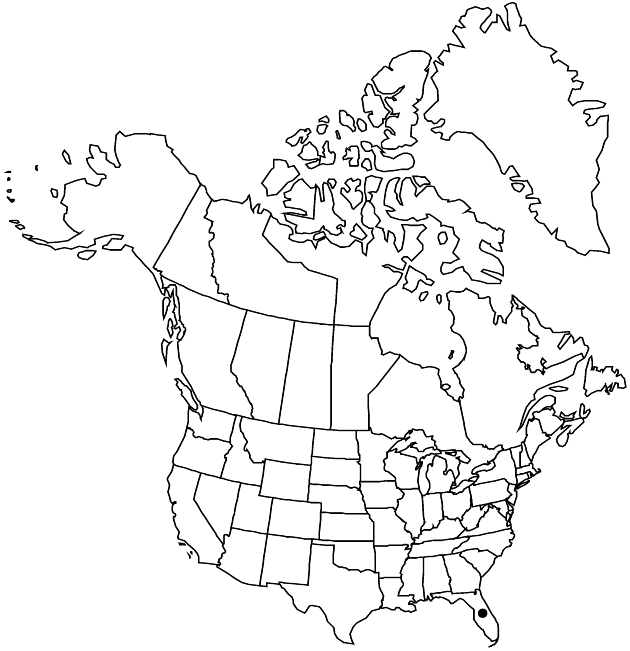Eurybia spinulosa
Phytologia 77: 262. 1995.
Plants 20–70 cm; solitary or clumped, eglandular; rhizomes short and stout or elongate and wiry, or caudices. Stems 1 (–3+), erect, simple, ± villous to glabrescent. Leaves strongly basal and cauline, linear, firm, ± fleshy, margins indurate, ± revolute, entire to spinose-serrate, smooth to remotely scabridulous or ciliate, spines indurate, finely parallel-veined with evident midribs, apices acute, revolute-indurate, faces glabrescent (minute hairs bulbous at base, threadlike distally); basal and proximal cauline persistent, sessile or petiolate (narrowing between bases and blades), blades lance-linear to linear, 100–300 × (1–) 2–5 mm, bases ± marcescent, sheathing, ciliate; cauline sessile, blades linear to lance-linear, 20–95 × 3–5 mm, progressively reduced distally, bases rounded to auriculate-clasping, adaxial faces sparsely villous in distal, the distal subtending heads boatshaped. Heads 3–16+ in spiciform to narrow, racemiform arrays. Peduncles 0 (usually) or ascending, 1–17+ mm, sparsely villosulous; bracts 0–2, ascending, lanceolate, bases not indurate, rounded (boatshaped), margins ciliate, faces glabrous. Involucres campanulate, 6.5–9.7 mm, shorter than pappi. Phyllaries 20–40 in 4–5 series, green, often ± involute in distal 1/2–2/3 (outer) to 1/3 (inner), densely nerved (nerves not thickened), lanceolate, unequal, coriaceous, bases indurate, rounded (outer), margins entire, indurate (outer) or scarious and often purplish (inner), sparsely ciliate, apices acute to acuminate, indurate, apiculate, adaxial faces glabrous or sparsely villosulous. Ray-florets 8–17; laminae pale-purple to purplish white, 10–16 (–20) × 1–1.8 mm. Disc-florets 18–30; corollas yellow, 5.5–7.6 mm, barely ampliate, tubes much shorter than tubular-funnelform throats (1–2 mm), lobes erect, lanceolate, 0.65–1 mm. Cypselae brown to gray-brown, fusiform, ± compressed, 2–2.5 mm, ribs 7–10, faces ± strigillose; pappi of burnt-orange (coarse, sometimes apically clavellate) bristles 6–7.5 mm, as long as or slightly longer than disc corollas.
Phenology: Flowering May–Jul.
Habitat: Moist to dry, acid sandy peats, savannas in long-leaf pinelands, fire-maintained
Elevation: 0–50 m
Discussion
Of conservation concern.
Eurybia spinulosa is known only from the Apalachicola River drainage of the Florida panhandle; it is of conservation concern in Florida and is a facultative wetland indicator. Much of its habitat has now been lost to development (R. Kral 1983, vol. 2). Kral published a map of the species.
Selected References
None.
Lower Taxa
"[" is not declared as a valid unit of measurement for this property."]" is not declared as a valid unit of measurement for this property.
